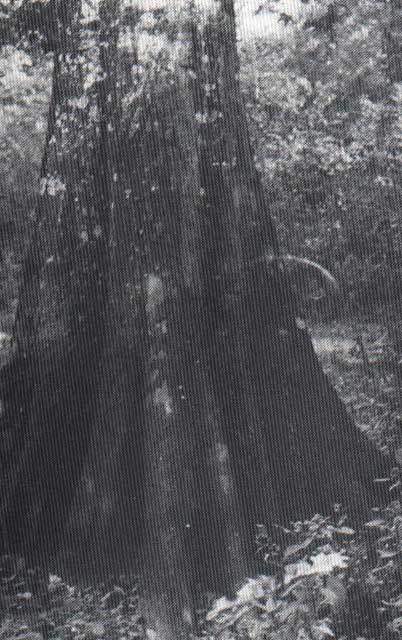
| Home |
| Tutorial |
| Photo Gallery |
| List of Defects |
| Links |
| Bark Distortion |
| Bird Peck |
| Bumps |
| Burls |
| Butt Scars |
| Butt Swells |
| Cankers |
| Conks |
| Epicormic Branches |
| Flanges |
| Flutes |
| Forks |
| Galls |
| Holes |
| Knots |
| Lesions |
| Limbs |
| Ring Shake |
| Rot |
| Seams |
| Soak |
| Splits |
| Wounds |
Significance: The wood of flanges is, by definition, outside the milling frustrum or included timber of the log. Flanges have no relation to blemishes in the underlying wood and cannot themselves be defined as log grade defects in any class of log. However, because their mere existence distorts the normal form of the log and because they cause such excessive distortion of the normally oval shape of the annual rings and as a result severe grain distortion, it is highly questionable whether flanged butt sections should be considered for logs of any class.
In veneer logs, flanges prevent rotary cutting of the veneer. One approach might be to cut of the flanges, slice them, and match the veneer pieces into decorative assemblies.
In factory logs, the flanges can be removed by taper sawing and then sent to the chipper. The lumber from the remainder of the log will show mostly distorted grain.
In construction logs, the flanges must be removed. The remainder of the log is more satisfactory for construction lumber and local-use products than for factory lumber.
In standing trees, log making and grading begins at the top of the heavily flanges butt section, and this flanges section probably should be used for wood chips.

